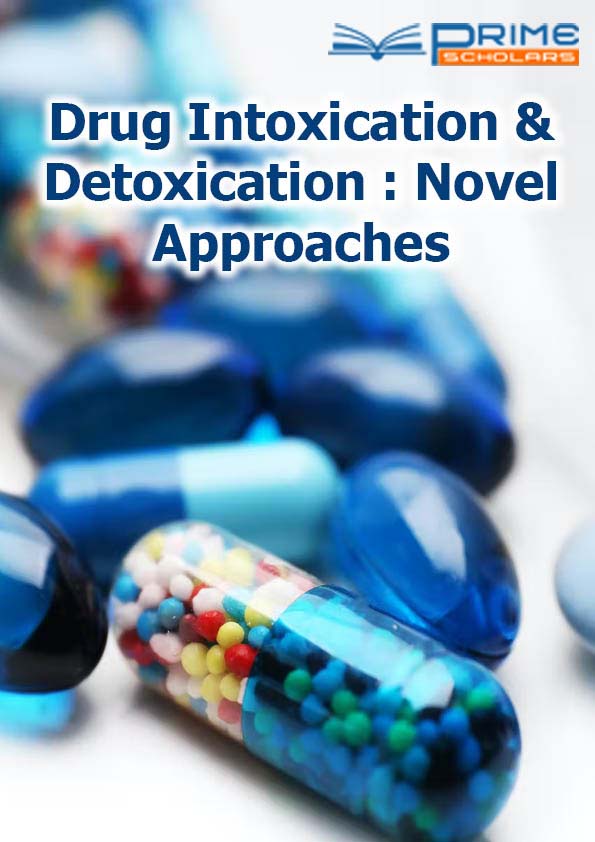Perspective - (2023) Volume 4, Issue 2
Utilitarian and Underlying Mind Changes Related With Methamphetamine Misuse
Bruce Rusell*
Department of Pharmacy, University of Auckland, New Zealand
*Correspondence:
Bruce Rusell,
Department of Pharmacy, University of Auckland,
New Zealand,
Email:
Received: 31-May-2023, Manuscript No. DIDNA-23-16838;
Editor assigned: 02-Jun-2023, Pre QC No. DIDNA-23-16838 (PQ);
Reviewed: 16-Jun-2023, QC No. DIDNA-23-16838;
Revised: 21-Jun-2023, Manuscript No. DIDNA-23-16838 (R);
Published:
28-Jun-2023, DOI: 10.36648/DIDNA 4.2.18
Introduction
Abuse of the highly addictive artificial psychostimulant methamphetamine
(mama) and its metabolite amphetamine is a
global scourge. In 2007, the estimated total number of victims
of amphetamines and mamas was her 25 million, surpassing
the absolute number of victims of heroin and cocaine. The U.S.
Drugs and Fraud Administration estimated the total number of
people who abused moms in 2007 from 15 million to 16 million.
In 2008, it was widely estimated that between 13.7 million
and 52.9 million of her from age 15 to her age of 64 had used
an amphetamine-like drug about once in the previous year, and
her mother’s total seizure count was 19.
Description
The physiological and psychological effects on moms greatly
exceed those of other psychostimulants of abuse. This can be
inferred from Mama’s much longer elimination half-life (8-13
hours versus her 1-3 hours for cocaine) and its high lipid content.
Solubility considering rapid access to synapses through
blood cerebral occlusion. Apart from the cardiovascular effects,
maternal intake causes strong mental and social effects
such as euphoria, excitement, and reduced fatigue, as well as
depressive feelings of irritability and neurosis. Enthusiastic
organization in moms may lead to improved cognitive skills,
including improved attention aids, concentration and motor
coordination. However, constant maternal abuse is associated
with mental deficits in attention, brain power, and working
memory. Too much separation from the mother can have terrifying
psychological effects such as restlessness, daydreaming,
and psychosis. Acute separation from the mother is often referred
to as a “fall” because it is associated with sullenness,
tension, irritability, fatigue, disturbed rest, and tragic side effects
such as increased desire and mental retardation. Mam’s
effects on the dopaminergic system have been studied in animal models. Using PET and postmortem studies, melega and
Partners reported that the striatum of mothers with mothers
several weeks, three weeks, and 10-12 weeks after maternal
therapy. We found that body DA scores and DAT restriction
sites were reduced. Treated vervet monkey. In rodents and
mice treated with intensively high concentrations of mammal
segments, striatal DA levels, TH migration, and DAT restriction.
Moreover, a mamm-treated rodent showed a decrease in her
VMAT-2 limit.
Despite its neurotoxic effects on the dopaminergic system,
mam has been shown to damage presynaptic 5-HT terminals.
According to maternal tissues, most mouse strains showed protection
from 5-HT neuronal intoxication, but in monkeys and
rodents maternal consumption of 5-HT was have been reported
in various brain regions, including, cerebrum, hippocampus,
amygdala. In addition, decreased tryptophan hydroxylase activity
in the striatum, hippocampus, nucleus accumbens and
cerebral cortex was observed in maternally treated rodents.
In rodents and non-human primates, mammalian-induced
monoaminergic depletion has been shown to be reversible,
and partial DA fusions and DA foci in the vervet monkey striatum
full recovery has been observed after 10-12 weeks.
Conclusion
There are few findings of neurotoxicity associated with noradrenergic
scaffolds in mama-treated subjects. In both cases,
decreased central concentration of NA was observed in the cerebrum
and midbrain of rhesus monkeys and striatum, cerebral
cortex and hippocampus of rodents after treatment with a high
proportion of mammals. Concentrates obtained in monkeys,
rodents and guinea pigs showed no progression of noradrenergic
terminal markers after treatment with different maternal
dosing regimens.
Citation: Rusell B (2023) Utilitarian and Underlying Mind Changes Related with Methamphetamine Misuse. Drug Intox Detox:
Novel Approaches. 4:18.
Copyright: © 2023 Rusell B. This is an open-access article distributed under the terms of the Creative Commons Attribution Li-
cense, which permits unrestricted use, distribution, and reproduction in any medium, provided the original author and source
are credited.
